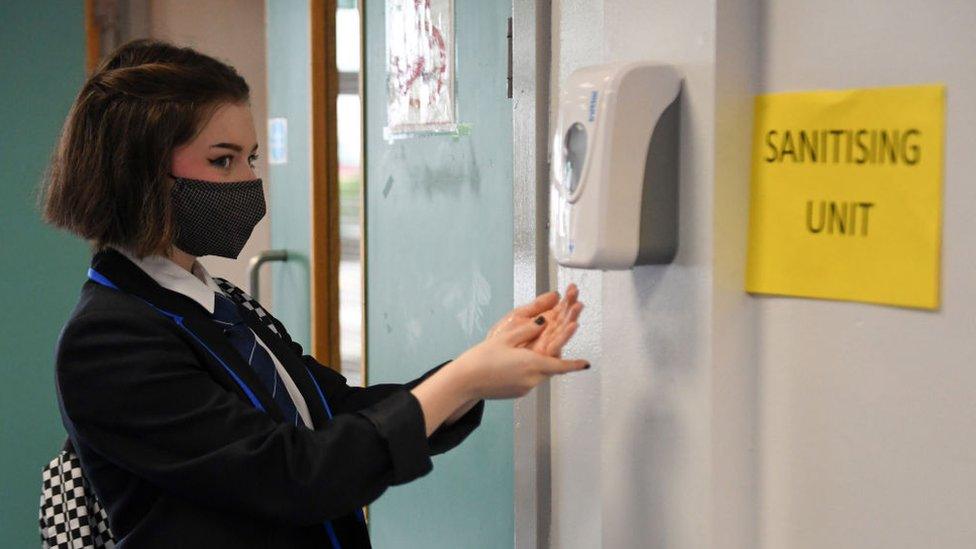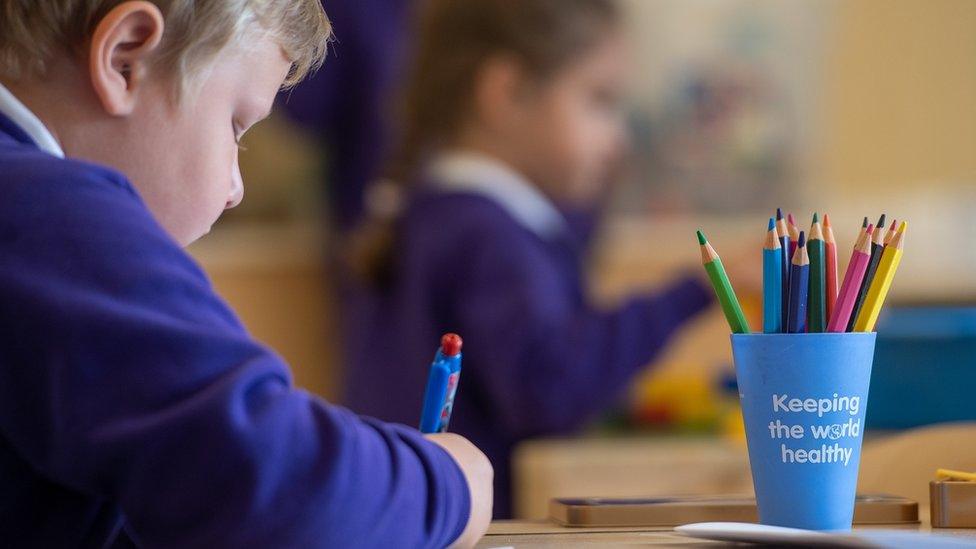Covid in Scotland: How will the phased return to school work?
- Published

Scotland's schools will open up to more pupils later this month, as part of plans for a phased reopening.
All pupils in P1-P3 and pre-school children can return to the classroom full-time from 22 February.
There will also be a part-time return, but on a very limited basis, for senior secondary pupils to allow them to complete work for national qualifications. Only between 5% and 8% of a secondary school's pupil roll will be able to be present at any one time.
Here are the answers to some of the questions you may have about how the return to the classroom will work.
Why aren't older children in primary schools going back too?
One reason for this is the concern that younger children potentially lose out the most from so-called remote learning. The government still feels that a full return of primary pupils is not possible, and the younger classes are being prioritised. Of course some older children are still in primary school buildings because their parents are key workers or because they are deemed vulnerable.
What sort of practical work can senior secondary students go back in for?

Older pupils will be able to return to school to complete practical work that can't be done from home
Older pupils will only be able to return after 22 February to ensure practical work important to achieving qualifications is completed - but the definition of practical work isn't prescriptive.
It is designed to cover the kind of work which cannot be done from home - notably in practical and vocational subjects. It might include work in practical subjects such as art or woodwork. It might also include laboratory work in science subjects. However, the work does not need to be related to the assessments teachers will be carrying out to estimate grades for those who should have sat exams.
When will there be news on when other students will be back at school?

First Minister Nicola Sturgeon said she hopes to set out the second phase of school re-opening on 2 March. However, she said it was unlikely that there will be any further return to school before 15 March.
The key thing will be whether community transmission is under control or not. It is worth watching the daily case numbers to see if they continue to fall.
The likelihood is that any decisions on the return will be taken on a Scotland-wide basis.
How will estimated grades for those who should have sat exams be made?
Teachers have until the middle of June to submit estimated grades. They need to be signed off by headteachers. The presumption is that candidates will get these grades in August unless the SQA has any cause to question them. There will be no algorithm so a school's previous record should not lead to a candidate's grades being revised up or down.
Detailed guidance on just what sort of evidence teachers need to gather to justify their estimates has been published by the SQA. The evidence will be needed should grades be queried. Often this could involve what are, in effect, class tests using the kind of questions normally set in exams.
The government says the National Qualifications 2021 Group will publish further details soon on how qualifications will be awarded in a way which fairly reflects pupils' experience of remote learning.
Will courses be completed on time?
This could depend on just when secondary pupils may be back in full-time. However, it is worth noting that after Easter, students are often on study leave or consolidating their courses. With no exams - and the June deadline for estimates - this time may be used to actually finish off the courses.
If all pupils start returning in England on 8 March, will it affect the decision in Scotland?
It certainly won't have a direct impact or set a precedent. The decision will be taken by the Scottish government and it will be driven purely by the data for Scotland.
However, as a general rule, case numbers in Scotland are lower than in England. How might parents might react if older primary children and early secondary students returned earlier in England than Scotland, even if case numbers south of the border are higher?
One challenge for politicians is to try to weigh up whether there is public support for ongoing restrictions and whether the public believes their benefit balances out the harm they cause to so many areas of life.
So far, improving case numbers north and south of the border are largely down to lockdown restrictions. Once the impact of the vaccination programme is clearer - especially if, as expected, it substantially cuts deaths and hospital admissions - it will be interesting to see if public attitudes change.


Do you have a question about the Covid restrictions in place in Scotland? Use the form below to send us your questions and we could be in touch.
In some cases your question will be published, displaying your name, age and location as you provide it, unless you state otherwise. Your contact details will never be published. Please ensure you have read the terms and conditions.
If you are reading this page on the BBC News app, you will need to visit the mobile version of the BBC website to submit your question on this topic.
Related topics
- Published2 February 2021
